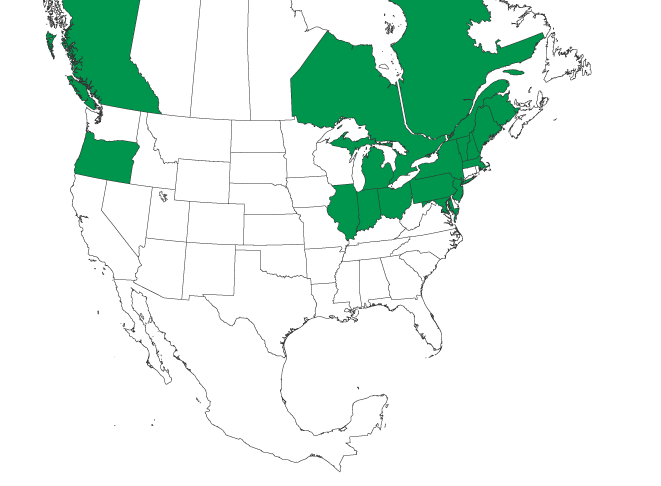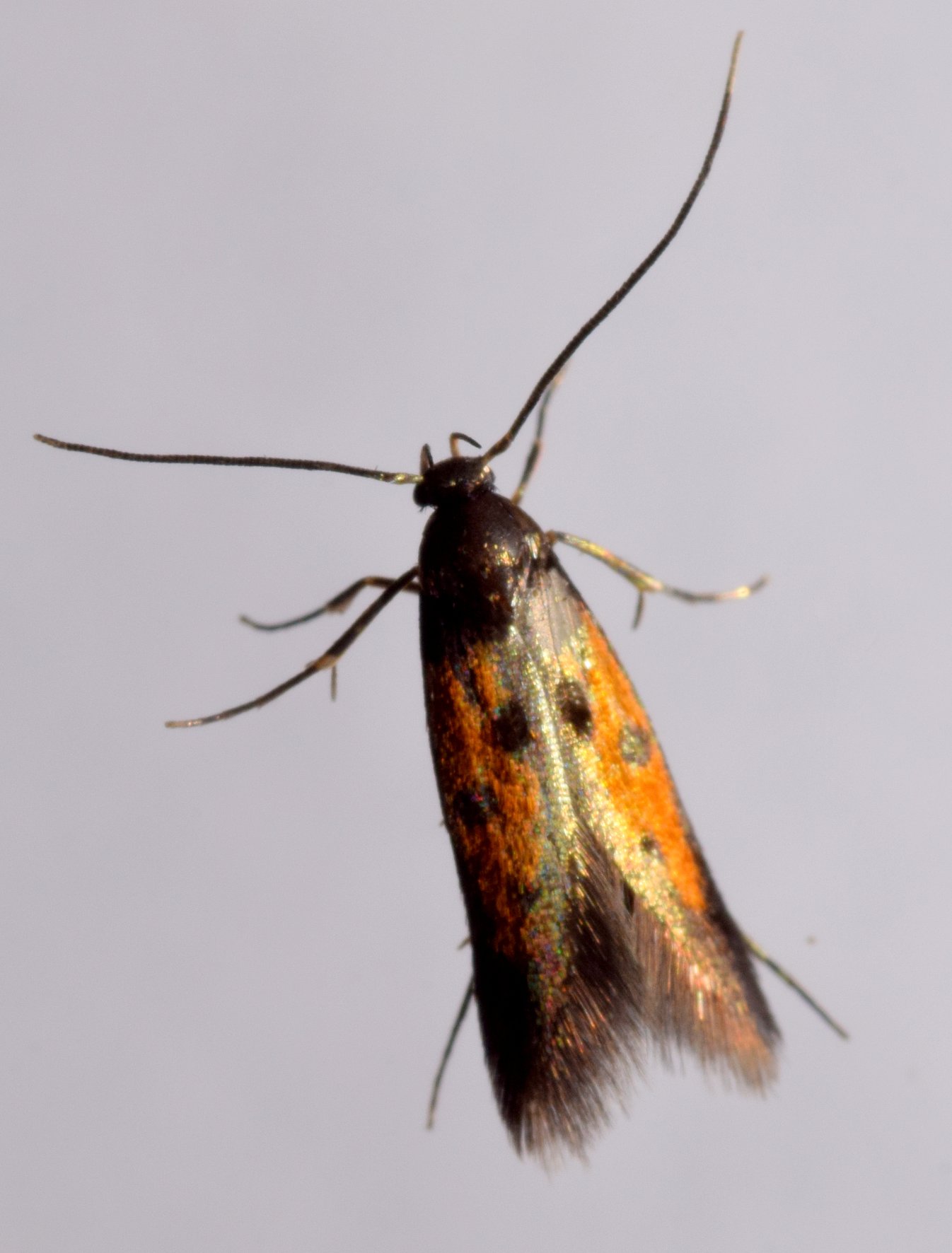ECOLOGY ▪ EDUCATION ▪ ADVOCACY
Chrysoclista: Combination of the Greek chrysos, meaning “gold,” with the Greek listo, meaning “border.”
linneella: Named for Carl Linnaeus (1707 – 1778), known as the Father of Taxonomy. Linnaeus was a Swedish born physician, botanist, zoologist, and author of “System of nature through the three kingdoms of nature, according to classes, orders, genera and species, with characters, differences, synonyms, places,” a book which pioneered the Linnaean taxonomy based on binomial nomenclature. The suffix ella means “small.”
dep-res-ahr-ee-uh dep-res-ah-nah
Linnaeus's cosmet and linden bark-borer moth
This map shows the confirmed sightings of Linnaeus's spangle-wing in Indiana. All sightings were confirmed through photographic documentation by individuals who contributed to the Great American IN Nature Lepidoptera Project (GAIN LP).
 |
GAIN LP documented in county. |
Documented North American Sightings as of 3/27/2020

| Date | County | Observer | Notes | Image1 | Image2 |
|---|---|---|---|---|---|
| 2023-08-25 | Porter | Jaskula, Jeanette |
 |

|
|
| 2018-06-04 | Porter | Joll, Chris | Adult |
 |

|
| Observation Details | Images |
|---|---|
| Date: 2023-08-25 County: Porter Observer: Jaskula, Jeanette Notes: |

 |
| Date: 2018-06-04 County: Porter Observer: Joll, Chris Notes: Adult |

 |
This species was first recoreded in New York City in 1928 and is thought to have been accidentally introduced via shipments of European linden (Tilia europaea) trees by the nursery trade.
Linnaeus's spangle-wing larvae are borers of European linden trees (Tilia europaea). Currenlty, they have not been documented on .
| Known Larval Food Sources in Indiana | ||
| Family | Taxonomic Name | Common Name |
|---|---|---|
| Order: Malvales | ||
| Tiliaceae | Tilia europea | European linden |